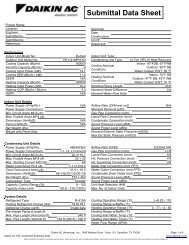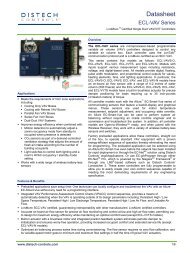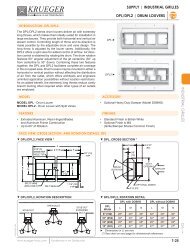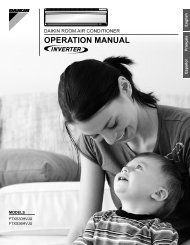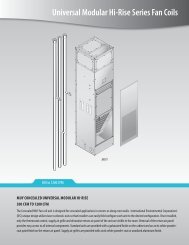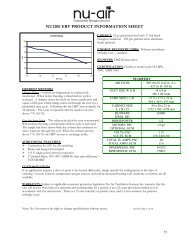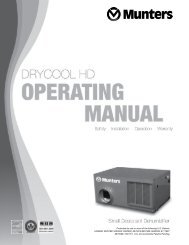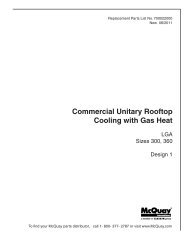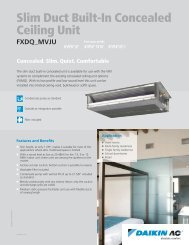FTXG Quaternity Operation Manual.pdf - Daikin AC
FTXG Quaternity Operation Manual.pdf - Daikin AC
FTXG Quaternity Operation Manual.pdf - Daikin AC
Create successful ePaper yourself
Turn your PDF publications into a flip-book with our unique Google optimized e-Paper software.
ADJUSTING AIRFLOW DIRECTION ·AIRFLOW RATEMore comfortable airfl ow is provided with airfl ow direction and airfl ow rateadjustment.• To change vertical and horizontal airflow directionsPress or during operation.(In case of vertical direction)• The airfl ow direction indication will display.• The horizontal and vertical louvers respectively move vertically and horizontally automatically.• If you want to fix airflow directionPress or again.• To use 3-D AIRFLOWPress and then during operation.• The vertical and horizontal airfl ow direction indications will display.• The horizontal and vertical louvers move alternately.• To cancel 3-D AIRFLOWPress or again.• To change the airflow ratePressduring operation. (Refer to table.)• COOLING or HEATING with “ ” or other weak airfl ow rate may not cool orheat the room suffi ciently.• Indoor unit quiet operationWhen the air fl ow is set to “ ”, the noise from the indoor unit will become quieter.Operating mode“SARARA” DRYINGDRY COOLINGAUTO / COOLINGAirfl ow rate settingHEATINGFLASH STREAMER AIR PURIFYINGFive levels of air fl ow rate setting from “ ” to “ ” plus “ ” “ ” are available.NOTE• If the unit is operated with the horizontal louvers pointed down and stopped in COOLING, “SARARA” DRYING, or DRY COOLING operation, thelouvers will move automatically after about one hour. (This it to prevent condensation from forming on them.)• ATTENTION• Be sure to use the remote controller to adjust the airfl ow direction. <strong>Manual</strong> operation of the louvers maycause it to work improperly.• Note on Adjusting the vertical airflow direction• The movable area for the horizontal louver is different depending on the operation mode.• Note on 3-D AIRFLOW• Using 3-D AIRFLOW circulates cold air, which tends to be collected at the bottom of the room, and hotair, which tends to be collected near the ceiling, throughout the room, preventing areas of cold and hotfrom developing.14A) 15°– 70°B) 20°– 60°C) 30°– 70°STOPA) 15°– 55° C) 25°– 55°B) 45°– 55°A) FLASH STREAMER AIR PURIFYINGIndividual operationB) “SARARA” DRYING · COOLINGC) HEATING



